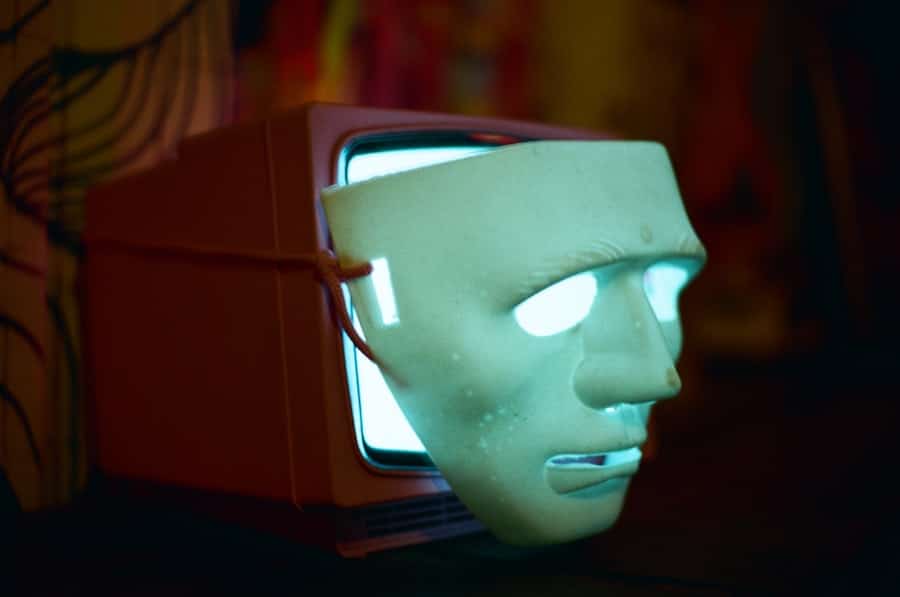In recent years, the emergence of virtual avatars has transformed the way individuals and organizations interact in digital spaces. These digital representations of users can take on various forms, from simple cartoonish figures to hyper-realistic 3D models. The rise of artificial intelligence (AI) tools has significantly enhanced the capabilities of these avatars, allowing for more personalized and engaging experiences.
Virtual avatars serve as a bridge between the physical and digital worlds, enabling users to express themselves in ways that were previously unimaginable. As technology continues to evolve, the potential applications for virtual avatars expand, impacting social interactions, gaming, education, and even professional environments. The integration of AI tools into the creation and management of virtual avatars has opened up new avenues for creativity and functionality.
These tools leverage machine learning algorithms to analyze user preferences, behaviors, and interactions, allowing for a more tailored experience. For instance, AI can help generate realistic facial expressions or voice modulation that aligns with the avatar’s personality. This level of sophistication not only enhances user engagement but also fosters a deeper connection between the avatar and its audience.
As we delve deeper into the world of virtual avatars, it becomes essential to understand how to choose the right tools for creation, customize their appearance, and imbue them with personality traits that resonate with users.
Key Takeaways
- Virtual avatars and AI tools are becoming increasingly popular for personal and professional use, offering a range of customization and integration options.
- When choosing an AI tool for creating virtual avatars, consider factors such as ease of use, customization options, and compatibility with different platforms.
- Customizing your virtual avatar’s appearance allows you to create a unique and personalized representation of yourself or your brand.
- Adding personality and emotions to your virtual avatar can enhance its relatability and engagement with your audience.
- Integrating your virtual avatar into different platforms can help expand its reach and impact, making it a versatile tool for personal and professional branding.
Choosing the Right AI Tool for Creating Virtual Avatars
Simple Avatar Generators for Casual Use
Tools like Bitmoji and Zmoji allow users to create cartoon-style avatars quickly and easily, making them ideal for casual use on social media platforms.
Advanced 3D Modeling Software for High-Quality Avatars
On the other hand, more sophisticated applications like Blender or Unity provide extensive customization options for users looking to develop high-quality 3D avatars suitable for gaming or virtual reality environments.
Additionally, compatibility with various devices and operating systems can play a significant role in the decision-making process.
Customizing Your Virtual Avatar’s Appearance

Once the right AI tool has been selected, the next step involves customizing the avatar’s appearance to reflect the user’s identity or brand. This process can be both exciting and intricate, as it allows for a wide range of modifications. Users can adjust physical attributes such as skin tone, hair color, eye shape, and body type to create an avatar that closely resembles them or embodies a desired persona.
Advanced tools often provide sliders and color palettes that facilitate these adjustments, making it easier to achieve the desired look. Moreover, customization extends beyond mere physical traits; clothing and accessories play a crucial role in defining an avatar’s style. Many platforms offer extensive libraries of outfits and items that users can mix and match to create a unique appearance.
For instance, virtual fashion platforms like DressX allow users to dress their avatars in digital clothing designed by real-world fashion brands. This not only enhances the avatar’s visual appeal but also provides an opportunity for users to express their personal style in a digital context. The ability to customize an avatar’s appearance is vital for fostering a sense of ownership and connection between the user and their digital representation.
Adding Personality and Emotions to Your Virtual Avatar
Creating a visually appealing avatar is just one aspect of avatar development; imbuing it with personality and emotions is equally important for enhancing user engagement. AI tools have made significant strides in this area by enabling avatars to exhibit a range of emotional expressions and personality traits. This can be achieved through various means, including voice modulation, facial animation, and behavioral algorithms that respond to user interactions.
For example, some platforms utilize AI-driven facial recognition technology to analyze a user’s expressions in real-time, allowing the avatar to mirror those emotions accurately. This capability not only makes interactions more dynamic but also fosters a sense of empathy between users and their avatars. Additionally, incorporating personality traits into an avatar can be achieved through dialogue options or predefined responses that align with specific character archetypes.
By allowing users to choose or customize their avatar’s personality traits—such as being friendly, sarcastic, or serious—developers can create more immersive experiences that resonate with audiences on a deeper level.
Integrating Your Virtual Avatar into Different Platforms
The versatility of virtual avatars is one of their most appealing features, as they can be integrated into various platforms for diverse applications. From social media networks to virtual reality environments and online gaming communities, avatars serve as digital representatives across multiple contexts. This integration is facilitated by AI tools that ensure compatibility with different software ecosystems.
For instance, platforms like VRChat allow users to import their custom avatars into immersive virtual worlds where they can interact with others in real-time. Similarly, gaming platforms such as Fortnite enable players to use personalized avatars during gameplay, enhancing the overall experience by allowing players to express themselves uniquely. Furthermore, businesses are increasingly adopting virtual avatars for customer service roles in chatbots or virtual assistants on websites.
By integrating avatars into these platforms, organizations can create more engaging interactions with customers while maintaining a consistent brand identity.
Using Virtual Avatars for Personal and Professional Branding

Virtual avatars have emerged as powerful tools for personal and professional branding in today’s digital landscape. For individuals looking to establish an online presence—be it influencers, content creators, or entrepreneurs—avatars provide a unique way to convey their identity and values visually. By carefully designing an avatar that reflects their personal style and ethos, users can create a memorable brand image that resonates with their target audience.
In professional settings, companies are leveraging virtual avatars for branding purposes as well. Organizations are increasingly using avatars in marketing campaigns or corporate training programs to enhance engagement and relatability. For example, companies may employ animated avatars in explainer videos or webinars to present information in a more approachable manner.
This strategy not only humanizes the brand but also fosters a connection with viewers who may find traditional marketing methods less engaging. As businesses continue to explore innovative ways to utilize virtual avatars, the potential for brand differentiation and audience connection will only grow.
Ethical Considerations and Best Practices for Virtual Avatars
As the use of virtual avatars becomes more prevalent across various sectors, ethical considerations surrounding their creation and deployment must be addressed. One significant concern is the potential for misrepresentation or misuse of avatars in ways that could harm individuals or communities. For instance, creating avatars that perpetuate stereotypes or cultural appropriation can lead to backlash and damage reputations.
It is crucial for creators to approach avatar design with sensitivity and awareness of cultural contexts. Additionally, privacy concerns arise when using AI tools that collect user data for personalization purposes. Users should be informed about how their data will be used and have control over their privacy settings.
Best practices include implementing transparent data policies and ensuring compliance with regulations such as GDPR (General Data Protection Regulation). By prioritizing ethical considerations in avatar creation and usage, developers can foster trust among users while promoting responsible practices within the digital landscape.
Future Trends and Developments in Virtual Avatars and AI Tools
The future of virtual avatars is poised for exciting developments as technology continues to advance at an unprecedented pace. One notable trend is the increasing integration of augmented reality (AR) with virtual avatars, allowing users to project their digital representations into real-world environments seamlessly. This convergence opens up new possibilities for social interactions, gaming experiences, and even remote collaboration in professional settings.
Moreover, advancements in AI are likely to enhance the realism of virtual avatars further. As machine learning algorithms become more sophisticated, avatars will be able to learn from user interactions over time, adapting their behaviors and responses accordingly. This evolution could lead to highly personalized experiences where avatars not only reflect user preferences but also anticipate needs based on past interactions.
Additionally, as virtual reality technology becomes more accessible, we may see a surge in demand for immersive experiences featuring realistic avatars in gaming and social platforms. The potential for cross-platform compatibility will also expand as developers work towards creating universal standards for avatar design and functionality. In conclusion, the landscape of virtual avatars is rapidly evolving due to advancements in AI tools and technology integration across various platforms.
As we navigate this dynamic environment, understanding how to effectively create, customize, and ethically deploy virtual avatars will be essential for harnessing their full potential in personal branding and professional applications alike.
If you’re interested in creating your own virtual avatar using AI tools, you may also want to check out this article on the Screpy reviews in 2023 helpful in optimizing your website’s performance and user experience. And if you’re into the world of NFTs, you might be interested in reading about the Cryptopunks NFT bundle that went for $17 million in a Christie’s auction.
FAQs
What is a virtual avatar?
A virtual avatar is a digital representation of a person, often used in virtual reality, gaming, and online communication platforms.
What are AI tools for creating virtual avatars?
AI tools for creating virtual avatars are software programs that use artificial intelligence algorithms to generate realistic and customizable digital avatars based on user input.
How do AI tools create virtual avatars?
AI tools create virtual avatars by analyzing facial features, skin tone, hair style, and other characteristics provided by the user, and then generating a digital representation that closely resembles the user’s input.
What are the benefits of using AI tools to create virtual avatars?
The benefits of using AI tools to create virtual avatars include the ability to customize and personalize avatars, create realistic and high-quality representations, and save time compared to manual creation.
Are there any limitations to creating virtual avatars using AI tools?
Limitations of creating virtual avatars using AI tools may include potential inaccuracies in facial recognition, limited customization options, and the need for high-quality input data for optimal results.
What are some popular AI tools for creating virtual avatars?
Popular AI tools for creating virtual avatars include Avatarify, Loom.ai, and Ready Player Me, among others. These tools offer various features and customization options for users to create their own virtual avatars.

